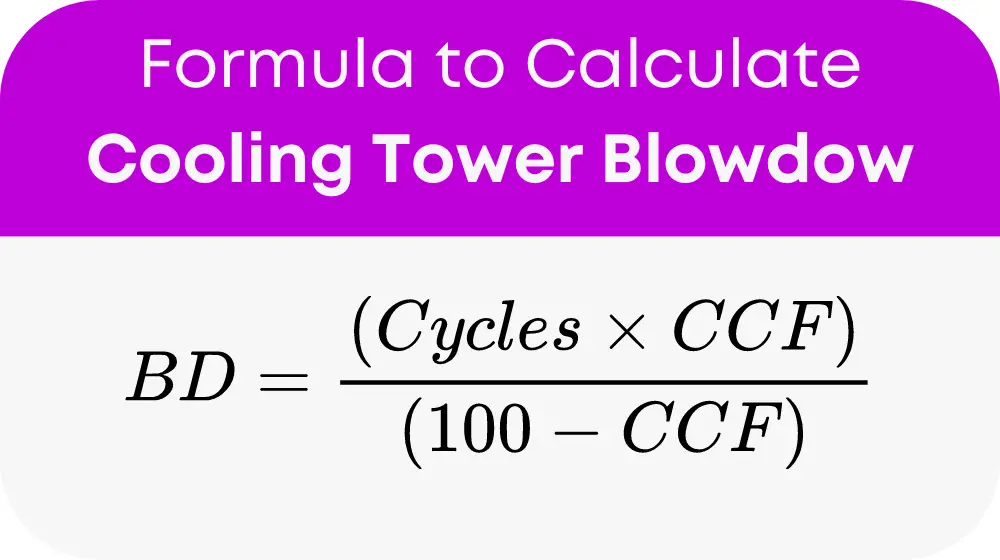The Cooling Tower Blowdown Calculator is a specialized tool used to determine the optimal blowdown rate for cooling towers. This rate is crucial for maintaining water quality within the cooling system by balancing the concentration of dissolved minerals and the conservation of water. By calculating the precise blowdown rate, facilities can minimize scale formation, corrosion, and biological growth within the cooling system, leading to improved efficiency, reduced maintenance costs, and enhanced longevity of the cooling tower infrastructure.
Formula of Cooling Tower Blowdown Calculator
The core formula used by the Cooling Tower Blowdown Calculator is:

Where:
- BD = Blowdown rate (% of circulating water flow rate)
- Cycles = Desired cycles of concentration
- CCF = Concentration correction factor
The concentration correction factor (CCF) formula further refines the calculation:
CCF = 1 / (1 + (Evaporation loss / Drift loss))
Where:
- Evaporation_loss = Percentage of water lost due to evaporation (%)
- Drift_loss = Percentage of water lost due to drift (%)
This formula encapsulates the relationship between water losses, mineral concentration, and the required blowdown rate to maintain system efficiency and water quality.
General Terms and Calculations
To further assist users, a table of common terms and their implications in the context of cooling tower operations is provided below. This resource aims to simplify the understanding and application of the Blowdown Calculator without necessitating manual calculations for each use case.
| Term | Description | Importance |
|---|---|---|
| Blowdown Rate (BD) | The percentage of circulating water to be expelled to maintain concentration levels. | Critical for water quality and conservation. |
| Cycles of Concentration | The ratio of dissolved solids in blowdown water compared to make-up water. | Indicates water efficiency and system health. |
| Evaporation Loss | Water amount lost due to evaporation in the cooling process. | Influences concentration levels and system efficiency. |
| Drift Loss | Water droplets carried away with the exhaust air. | Minor but continuous water and chemical loss. |
This table serves as a quick reference for users, aiding in the efficient operation and management of cooling tower systems.
Example of Cooling Tower Blowdown Calculator
Consider a cooling tower with a desired cycles of concentration of 5, an evaporation loss of 3%, and a drift loss of 0.02%. Using the formula and correction factors provided, the blowdown rate can be calculated, offering a precise guideline for maintaining optimal water quality and system efficiency.
Most Common FAQs
A: Calculating the correct blowdown rate is essential for balancing water conservation with the need to remove dissolved minerals and impurities. This balance prevents scaling, corrosion, and biological growth in the cooling system.
A: Yes, an optimal blowdown rate ensures the cooling tower operates efficiently by maintaining water quality, thus preventing issues that could lead to increased energy consumption or system downtime.
A: It’s advisable to use the calculator regularly, especially when there are changes in water quality, temperature, or system operation conditions, to ensure the cooling tower operates within optimal parameters.